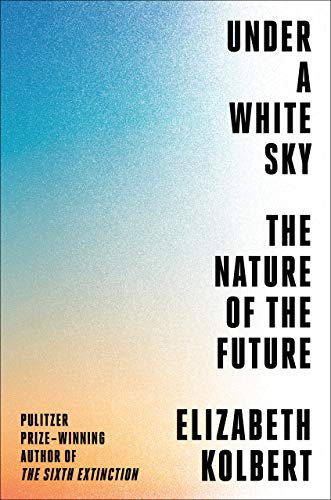
The Army Corps of Engineers once boasted of the Mississippi River, “We harnessed it, straightened it, regularized it, shackled it.” This is the reason that southern Louisiana is disintegrating. If control is the problem, then by people’s reasoning, more control must be the solution.
Elizabeth Kolbert, the Pulitzer Prize winning author of The Sixth Extinction, looks at how we change nature to suit our needs and then how we use technology to try to correct the problems caused by previous interference.
In the first section, Down the River, Kolbert examines two major engineering feats that changed the flow of two rivers, the Chicago River and the Mississippi River. A massive project at the end of the 19th century reversed the Chicago River so that the sewage and effluent that poured into Lake Michigan, thereby threatening Chicago’s drinking water supply, now ran into the Des Plaines River and eventually into the Gulf of Mexico. This resulted in affecting the hydrology of about two thirds of the United States resulting in disastrous ecological and financial consequences. It also connected major river systems that resulted in invasive species being able to enter the Great Lakes. One of the solutions – electrify the river – another massive engineering interference!
The second section, Into the Wild, looks at biodiversity loss and how we now spend millions of dollars to save a few nearly extinct species. Kolbert examines the effort that is being taken to save the pupfish of Devils Hole in Death Valley. Sapphire blue and about an inch long, Devil’s Hole pupfish, Cyprinodon diabolis, live in an isolated pool about sixty feet long and eight feet wide, possibly the smallest range of any vertebrate. The scientists who have spent decades studying pupfish are truly invested in their well-being. When one was asked “What good are pupfish?” the reply was, “What good are you?”
In the third section, Up in the Air, Kolbert examines when and how people began to alter the atmosphere by increasingly adding CO2 to it. One scientist claims that “the start of the switchover from control of climate by nature to control by humans occurred several thousand years ago”, an early Anthropocene – the human epoch. A more widely held belief is that the steam engine designed by James Watt kicked started the Industrial Revolution and caused CO2 emissions to slowly begin to arise. Now technologies are being developed to pull CO2 from the air and then store it in a safe manner. Other scientists are working on different climate modifications. We have to hope that unintended consequences don’t occur.
According to the author, Under a White Sky is a book that is about people trying to solve problems created by people trying to solve problems. It is available for purchase through online companies such as Indigo and Amazon or it can be ordered through your local independent bookstore.
This book is reviewed by Heather Ewing, a great supporter of the Orillia Naturalists’ Club
